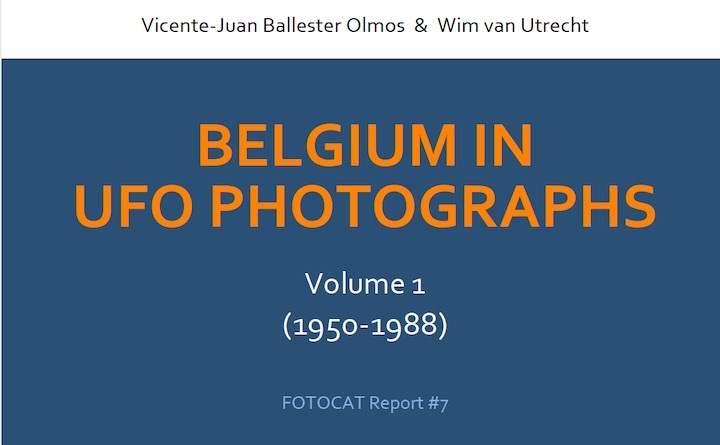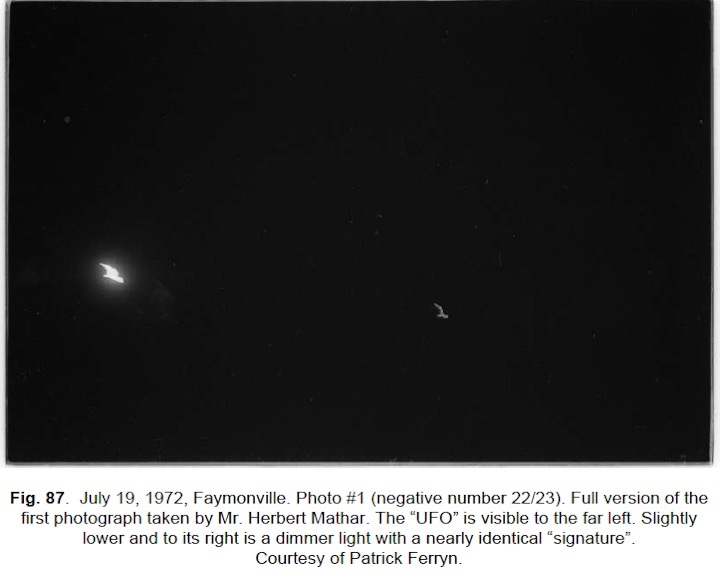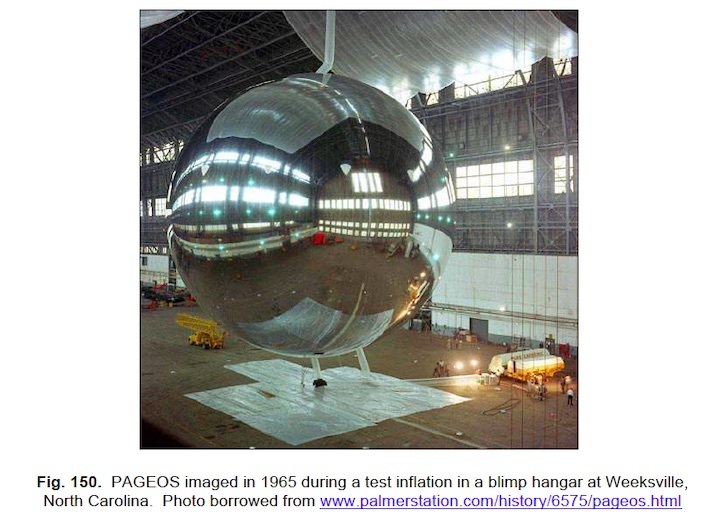
UFO-Bücher gibt es ja reichlich, nur wenige sind jedoch für den Interessierten von großer Hilfe um einen Durchblick zu erhalten. Um so wichtiger ist es Bücher zu haben welche den Anspruch "gelesen und zur Weiterempfehlung" gerecht zu werden. Mit BELGIUM IN UFO PHOTOGRAPHS ist ohne Frage unseren Kollegen Vicente-Juan Ballester Olmos & Wim van Utrecht mit ihrem tiefgründigen Recherche-Potenzial ein solches Buch gelungen, welches auch ein Hinweis auf zeitaufwendige Untersuchungen gibt. Auch zeigt es wie aufwendig manche UFO-Fälle sein können und gerade eben "man es sich einfach macht und wegerklärt" wie es gerne die Hardcore-Ufologen zur Rettung ihrer UFO-Gedankenwelten bezeichnen und sich in ihrer UFO-Welt verlieren.
CENAP hat die Erlaubnis bekommen Auszüge aus dem Buch übernehmen zu können und so wollen wir gerne das Vorwort von James Oberg hier veröffentlichen der die Qualiätät des Buches trifft!
CENAP-Michelstadt

FOREWORD
By James Oberg (*)
The 70th anniversary of humanity’s encounter with the ‘UFO Mystery’
has recently passed, and anniversaries are good waypoints in time to assess
the current state of understanding of this mass cultural phenomenon that
may also hint at a world-shaking scientific revolution. If the most imaginative
theories turn out to be true it will be the greatest human discovery in history,
and if none of the extraordinary theories turn out to be true, it then would
‘merely’ be one of the grandest cultural delusions in human history. Either
way, it deserves serious attention.
Without taking sides on selection of explanations, Vicente-Juan
Ballester-Olmos and Wim van Utrecht have been practicing a methodology of
research that—were it far more widespread—could help determine the better
theories from the more extreme ones. They are looking at, and recording, the
raw data, in painstaking detail and depth, to provide current and future
researchers with the rarest and most valuable resource in any mystery,
authentic clues.
Their basic assumption, which I share, is that there are potentially
important processes and events that are today hopelessly mixed into the
soup of misidentifications, mistakes, occasional hoaxes and delusions, that
comprises the ‘UFO data base’. To focus in on the potential pearls, to identify
them and describe them to the detail required to test theories against them,
they have generated catalogs of reports covering decades of human
perceptions. Unlike most Internet databases, they expend great effort in
going beyond ‘cataloguing existing catalogs’ by quoting from other existing
sources and books, passively relying on assumptions of diligence and
competence by often anonymous (or, if known, occasionally dubious)
previous investigators.
Over the decades, thousands of ordinary citizens fascinated by the
possibilities of this mind-stretching phenomenon have labored, usually in
private, to collect, assess, and record events in their immediate vicinity. They
did so in the trust that someday the fragments of the puzzle would
accumulate a mass and shape from which an explanation (or several
explanations) would become discernable. If and when that happens, these
enthusiastic volunteers will deserve a lot of the credit.
An example of documentation work done by Ballester-Olmos and
directly applicable to my own investigations (space and missile related events
and reports) deals with the Canary Island sightings of the 1970s and 1980s.
The sighted phenomena turned out to be top secret missile tests by
American submarines. In many substantial ways the witness reports showed
the same features of reports from other events around the world also sparked
by missile launches.
There is a significant value to such ‘solutions’, far beyond the
satisfaction of merely ‘solving’ a famous story. Most ‘ufologists’ are quite
adamant that when a case is shown to not be a UFO, but an ‘IFO’ (Identified
flying Object), it is no longer of interest to the study of UFOs and ought to be
deleted from existing data bases. Ballester-Olmos and Van Utrecht, like me,
believe that just the opposite is true; that such ‘IFOs’ have lessons to teach
‘ufologists’ that are crucial to making sense of cases that remain in the ‘true
UFO’ databases.
Here’s why: our understanding of the process between raw perception
and ultimate memory formation and recollection remains very shaky. The
concept of a ‘trained witness’, or of assigning veracity of a witness to their
intellectual, academic, or professional level, remains dominant in the ‘UFO
Studies’ universe. The report of a pilot or an astronomer (or a movie star or a
politician) is given heavier weight because of their status.
So when a medical doctor on the Canary Islands reports seeing a
transparent craft a few hundred meters from him, one evening after sunset
on a road through a local forest, with two humanoids inside working on
control consoles, the presumption is that such a visual manifestation actually
existed as described.
But when Ballester-Olmos’s meticulously documented case files show
that many people on the island were at that same date and time, and in the
same direction, were seeing the sunlit ascent plume of an American
submarine-launched rocket rising above the horizon, there is confusion and
disbelief. The two sightings must be coincidental because nobody—
especially a medical expert!—could possibly misinterpret one for the other. If
it happened only once, it would be hard to claim it WAS such a perceptual
error, but the written record of IFOs show that it is, in fact, a common pattern.
In another report which Ballester-Olmos discovered, and shared with
me (I had NEVER seen it) because he intuitively suspected its significance,
the same pattern was displayed. Certain kinds of unusual once-in-a-lifetime
stimuli were reported in similar misperceived forms. This case, a nearly
horizontal fireball swarm over Kiev, USSR, in 1963, had more than a hundred
witness reports and drawings. About half showed various configurations
recognizable as a swarm of meteors, but the other drawings showed not
scattered fireballs but one enormous structured object covered with lights or
rocket thrusters.
The fireball swarm was caused by the atmospheric reentry of satellite
rocket, as it disintegrated in flames about 100 km high moving at 8 km/sec.
Soon it became clear that other particularly large satellite reentries, under
good nighttime viewing conditions, were sparking almost identical
misperceptions all over the world (France, Estonia, Zimbabwe, Yukon,
Florida, all over). People of all ages, cultures, education and professional
levels, all were seeing a documented prosaic event (for the first time in their
lives) and many of them were coming up with interpretations of uncanny
similarity.
The implication of this is startling, in that people’s minds jump to quick
conclusions about startling sights based on evolutionary shaping and on
personal lifetime experiences. But this interpretation depends on the
reliability of the detailed reports that had originally been written based on
witness interviews near the time of the events.
The existence of such data, and its ready accessibility via smart
indexing schemes, was crucial to the development and validation of this
profoundly important insight. The theory remains controversial among serious
UFO investigators. But that it exists at all is a tribute to the original
chroniclers AND to the kind of data gathering and documentation that this
current book demonstrates.
The newfound power of combining GOOD records keeping with
Internet tools and search engines can be seen in specific cases discussed by
the authors. The Faymonville photos (pages 99-113), together with witness
testimony and post-event questioning, is a good example.

Note this comment
by an early investigator: “The object, which was several hundreds of meters
away when the sighting began, approached the witnesses at a constant pace
following a SSE-NNW trajectory… slowly heading in their direction.” An
immediate warning signal is to note how the witnesses jumped to a
conclusion about distance to the object when there were NO valid clues to
how far away it actually was. Such premature interpretation of visual stimuli
often leads witnesses to subconsciously edit subsequent perceptions and
recollections to ‘fit’ a hypothesis that was unjustified. The current report
proposes an astronomical explanation that is plausible in the cultural context
that surrounded this period in the country.
But such explanations are not ‘proven’ either, except to the degree
required to demolish the common pro-UFO argument that “there is no
OTHER possible explanation” aside from an unknown stimulus, perhaps
alien visitors. THAT theory is not disproven but in terms of scientific proof is
shown to be unnecessary to account for the testimony and photos. So it fails
to attain confirmation.
I was also impressed with similar dogged investigations and plausible
reconstructions of other sightings and photos [such as the PAGEOS balloon
over Mariakerke (pp. 154-162)], where previous investigations had
erroneously eliminated prosaic explanations based on inaccurate
assumptions as well as unfamiliarity with common perceptual errors when
observing stars and moving objects high in the sky.

Particularly impressive
was the authors’ description of brief distraction leading to transfer of
reference point from a nearby star to the moving object and the misleading
misperceptual consequences. In 1974 while observing a known satellite,
EXACTLY the same experience struck me so vividly I was overwhelmed with
vertigo and stumbled, almost falling to the ground.
In case after case, the authors apply wide knowledge of geometry,
optics, meteorology, human perception, and human cultural context (they
recognized one impressive-looking UFO photo as actually taken from a
popular French science fiction movie), to illustrate that plausible explanations
often are found not by dogged cookbook methods but by inspiration and by
accident. No wonder, then, that not ALL such prosaic explanations can be
found, however dedicated and diligent may be the amateur investigators.
The question of alien visitors [who could remain as detectable or not,
as they desire, or even disguise themselves as weather balloons as needed]
remains unresolved, but the satisfaction of seeing good detective work is
worth the reading. The implication of this work is that the body of existing
reports and photographs does not unambiguously require the existence of
ANY new phenomenon. But there are plenty of HUMAN and natural
phenomena of great interest to science, to national security, to psychology, to
sociology, that are wrapped up in these reports which makes them worth
studying, and they deserve study at the level of this book.
As such, the approach shown by Ballester-Olmos and Van Utrecht
should serve as an example and as an inspiration to other ‘citizen scientists’
who have played, and will continue to play, a crucial role in providing the
resources that will allow theorists with more data and wider insight to
someday make more sense about what lies behind this mysterious
phenomenon.
________________
The Belgium FOTOCAT spreadsheet (1950-1988) can be consulted by accessing the
following link:
https://www.academia.edu/34194218/1950-
1988_BELGIUM_FOTOCAT_August_2017.pdf

